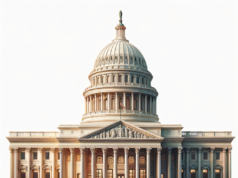
The Code of Federal Regulations in Administrative Law: A Key Resource for Regulatory Compliance
Administrative law encompasses the regulatory framework that governs the actions and decisions of administrative agencies. Central to this framework is the Code of Federal Regulations (CFR). The CFR is a vital tool for understanding the complex web of federal regulations in the United States, providing guidance and clarity on compliance obligations. This article will delve into the significance of the CFR in administrative law, its structure, purpose, and the benefits it offers to individuals, businesses, and government entities.
Understanding the Code of Federal Regulations:
The Code of Federal Regulations is a comprehensive compilation of all federal regulations currently in effect. It is organized by subject matter into fifty discrete titles, covering a wide range of areas such as agriculture, commerce, energy, environment, transportation, and more. Each title corresponds to a specific federal agency or group of agencies responsible for issuing and enforcing the relevant regulations.
Purpose and Role of the CFR:
The primary aim of the CFR is to provide access to federal regulations in a consolidated and readily accessible format. It serves as a crucial resource for government officials, attorneys, businesses, and individuals seeking to understand and comply with federal regulations. Some of the key purposes and roles of the CFR include:
1. Accessibility: The CFR is designed to make federal regulations more accessible to the public. By consolidating regulations into a single document, it removes the need to navigate multiple agency websites, saving time and effort.
2. Clarification and Guidance: The CFR provides detailed explanations and interpretations of federal regulations. It includes regulatory text, discussion, and cross-references to related laws and regulations, aiding in the understanding and implementation of regulatory requirements.
3. Uniformity: The CFR promotes uniformity and consistency in the application and enforcement of federal regulations. By having a single source for regulations across different agencies, it helps ensure that regulations are interpreted consistently and applied uniformly throughout various sectors of the economy.
Structure of the CFR:
The CFR is organized into fifty titles, with specific sections, parts, and subparts. Each title is typically associated with a specific federal agency or group of agencies. The structure of the CFR is as follows:
1. Title: Each title corresponds to a particular subject matter or agency. For example, Title 21 deals with food and drugs, while Title 40 focuses on environmental protection.
2. Parts: Titles are divided into parts, each addressing a specific aspect or subtopic within the subject matter. Parts are presented numerically, allowing users to navigate and locate relevant regulations easily.
3. Sections and Subparts: Parts are further divided into sections and subparts. Sections contain specific regulatory provisions, while subparts group related sections together based on common themes or subject matter.
Benefits of the CFR:
The CFR offers numerous benefits to individuals, businesses, and government entities:
1. Regulatory Compliance: The CFR serves as a valuable guide for compliance with federal regulations. It allows businesses and individuals to understand their obligations, rights, and responsibilities under the law.
2. Risk Reduction: By providing access to comprehensive and up-to-date regulations, the CFR helps mitigate risks associated with non-compliance. It enables businesses to avoid penalties, fines, and legal disputes by ensuring adherence to regulatory requirements.
3. Regulatory Research: The CFR aids legal professionals, researchers, and policymakers by providing a centralized and authoritative resource for studying federal regulations. It allows for in-depth analysis, research, and evaluation of existing regulations and their implications.
4. Transparency and Accountability: The CFR fosters transparency by making federal regulations accessible to the public. It enhances accountability by enabling stakeholders to understand the rationale behind regulations and providing a mechanism to track any changes or updates.
The Code of Federal Regulations is an indispensable tool for navigating the vast landscape of federal regulations in the United States. Its structure, purpose, and accessibility make it an invaluable resource for regulatory compliance, risk management, and legal research. By consolidating regulations into a single document, the CFR promotes uniformity, clarity, and consistency in the application and enforcement of federal regulations. As administrative law continues to evolve and shape our regulatory landscape, the CFR will remain a cornerstone of regulatory compliance, fostering transparency and accountability in government actions and decisions.
________________
What is the Code of Federal Regulations?
The Code of Federal Regulations is the official codification of the general and permanent rules and regulations—referred to in a broad sense as administrative law—published in the Federal Register. The Code of Federal Regulations is affirmed in this daily publication by the various executive departments and agencies of the United States Federal Government. The Code of Federal Regulations is published by the Office of the Federal Register—an administrative agency that operates within the National Archives and Records Administration.
Administrative law, which is a type of public law, exists because the United States Congress typically grants authority to the agencies of the executive branch in order to interpret the statutes in the United States Code. These statutes are then enforced by various agencies because Congress and other departments may be too busy or congested to micromanage the jurisdiction regarding writing statutes to cover every possible detail. According to the Administrative Procedure Act, these agencies are permitted to create detailed regulations through a public rule-making process. In this process, the public is allowed to voice their opinions and comment on the public information offered; following a grace period, the rules and regulations are then published in the Federal Register.
These rules are treated by the courts as legally binding forms of statutory law, provided that the regulations are a reasonable interpretation of the underlying statutes. For example, if the United Stats Congress passed a law that stated there are not be excessive levels of mercury in any body of water in the country, an entity, such as the United States Environmental Protection Agency could further define, through a scientific lens, what the exact meaning of an “excessive level of mercury” is. The agency’s definitions and its subsequent plan of enforcement will all be published into the code of federal regulations.
Publication of the Code of Federal Regulations:
The rules and regulations are first created and published in the Federal Register; each is then given a code of federal regulation number, such as 42 CFR460 11 (a) (1), that will be cited immediately. The aforementioned code of federal regulation would read as: “title 42, part 460, section 11, paragraph a 1.

































